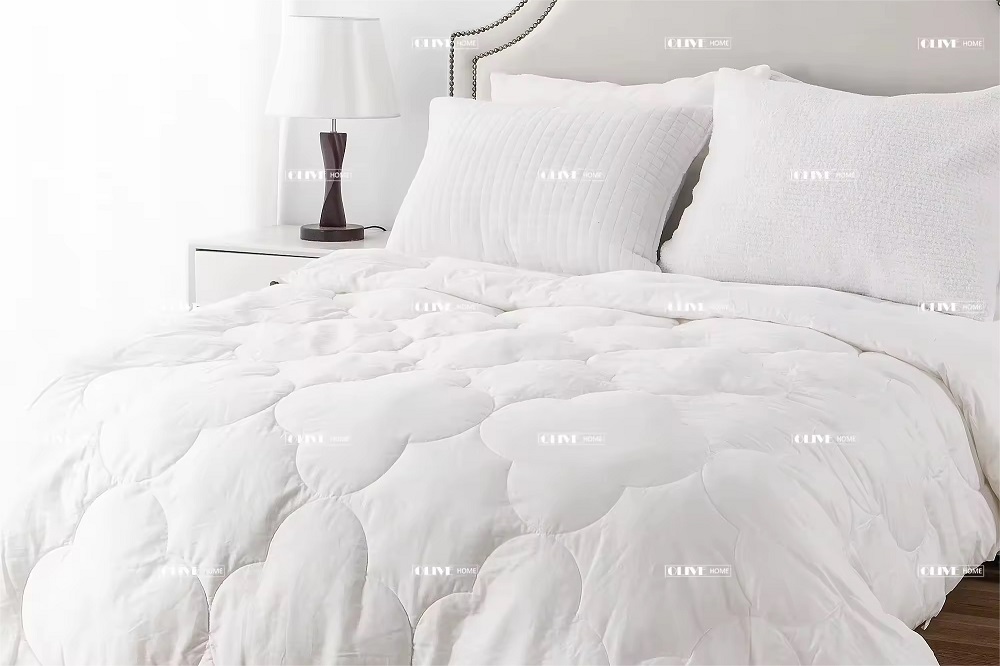Before choosing a down comforter, there are a few aspects you should consider first. Otherwise, you may not receive the right comfort level from the first comforter you bought off the shelf.
Some of these factors include knowing the difference between goose and duck down, the right warmth level, the different weaves, and how to find the best size. Doing research beforehand is an extra step, but it can help you find the best down comforter.

Goose vs. Duck Down
Down comforters contain either goose or duck down. Goose down contains larger down clusters and traps more heat. This is why goose down comforters are so popular that they’re also more expensive than duck down.
On the other hand, duck down has smaller clusters and provides less insulation, but duck down comforters cost less than goose down. For those on a budget and looking for a down comforter, duck down is an excellent choice.

Warmth Level
One major component that can influence which comforter you choose is the warmth level you’re looking for. Is the comforter for cold weather, warm seasons, or year-round use? To find the right warmth level, look at a potential comforter’s fill power and fill weight. These two aspects influence how much warmth a comforter has.
Fill Power
Fill power is defined by how much material is contained inside one ounce of fabric, and measured in grams per square meter (GSM). The higher the fill power, the more insulation a down comforter has to offer. Most comforter brands list the GSM in the product description or specifications.
For example, if you’re looking for a spring or summer comforter, the fill power should be 400GSM or less. For a cold-weather comforter, 600GSM or higher. Then, if you want to enjoy a year-round comforter, the fill power should be between 400GSM and 600GSM.
Fill Weight
Fill weight refers to the number of ounces inside a comforter. Fill weight is the driving force behind how much warmth a comfort has. The higher the fill weight, the warmer the comforter.

Shell Material
The outer material that encases the fill is the down comforter’s shell. Shells can come in a variety of fabrics, but the two most common are cotton and silk. Some brands may have cotton-blend or polyester shells, but these materials are typically found in down alternative comforters.
Cotton
Cotton is a natural material known for its breathability and softness. It’s also one of the most popular bedding materials. Many all-season down comforters have cotton shells because the material keeps you warm, but maintains continuous airflow. Cotton keeps you warm and cozy in the winter and cool during the summer.
Silk
Silk is another natural material used in comforter shells. Silk is a breathable, wrinkle-resistant, and notably strong fiber. The material is also more expensive, but the smooth and shiny material may be worth it if you prefer silk.

We offer a comprehensive customization service for your bedding such as size, colors, materials and others. The extensive customization option allows you to choose an economical solution or one that can accomplish your business goals. Feel free to contact us when you need any customized help on your bedding products.



